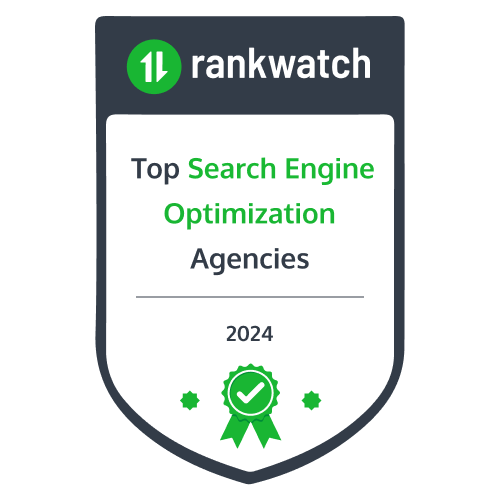Prioritizing customer-centricity is what separates successful businesses from struggling ones.
Why?
Customers want to do business with brands that deeply understand them. They want to feel seen, heard, and valued. They’re tired of being another number on a call sheet or another line in someone’s CRM.
That’s why it’s pivotal to leverage marketing analytics and hidden customer insights to learn more about what your customers want and expect.
Let’s take a closer look at how you can uncover rich data about your ideal customer.
Unify and Secure Data With OIDC
Understand customer behaviors, preferences, and journeys by unifying data from various touchpoints.
These include website interactions, social media engagements, purchase histories, and customer service records.
Consider using an authentication protocol like OpenID Connect (OIDC) and OAuth to facilitate this integration. Authentication protocols provide a secure and standardized way to identify users across different platforms and applications.
The main benefit?
You’ll see a holistic view of each customer’s unique journey. This is key to making sure data doesn’t slip through the cracks. It’s also one of the best ways to make sure you’re getting the full picture — analyzing data in dribs and drabs can create holes in your process. It can also lead to costly data analysis mistakes.
Use Session Replay Tools To Uncover Customer Friction in Real Time
Get a close look at how customers behave with your solution by recording and replaying user interactions on your website and mobile apps. By combining session replay data with marketing analytics, you can uncover hidden patterns of customer engagement, preferences, and pain points throughout the customer journey.
For instance, analyze session replays to highlight areas where users experience friction or confusion. You might notice customers struggling to use your features, rage-clicking to find what they need, or idling on certain pages.
Use these insights to improve your website and app usability and boost conversion rates.
You can also use this integrative approach to see how your marketing campaigns affect user behavior. Identify what works and refine your marketing tactics accordingly.
For example, you might learn that 14-day trial campaigns perform better than 7-day trial campaigns. Or, you might learn that webinar invitations help you generate more leads for your solution.
“Listen” to Your Customers and Uncover Trends With Social Listening Tools
Discover what conversations your customers are having behind the scenes with social listening.
Social listening tools can help you spot online search trends, social media discussions, and brand sentiment. They can also help you gather branded mentions and visual products you can use as social proof in your marketing campaigns.
You can also use listening insights to guide marketing strategies, content creation, and even product packaging and labeling decisions to address customer concerns.
You can use social listening tools to spot negative comments in real-time. This helps you gather more hidden insights and allows you to quickly respond to commenters to help maintain a positive and supportive brand image.
Monitor Customer Conversations
Some of your most valuable data will come directly from your customers. It’s vital that you use the right tools to get the most out of that data.
As your marketing generates leads, marketing analytics tools help score those leads and segment your customer data accordingly. Call center software evaluates this customer data, prioritizes calls, and assigns them to the appropriate sales reps.
The data continues on this value loop as the call center software tracks call performance and sends that information back to your marketing analytics. This feedback system provides consistent insights into your lead generation process, resulting in higher conversion rates and increased sales.
Another valuable source of information is community forums. Find your customers to see what questions they ask fellow users and peers. You can find relevant threads by searching for your brand name, solution, product, or specific industry.
Tie your searches to your brand goals.
For instance, if you’re on a mission to innovate your current products, consider looking up your product name and the industry you’re a part of. This can help you uncover what pain points customers are bringing up in forums about your specific product and other products your competitors sell.
Or, if you’re interested in seeing what sentiment customers have about your industry in general, you can search your specific industry along with keywords. For instance, if you’re in the gaming industry and want to learn about current popular games, you might search “gaming” and “best video games.”
You can find these conversations in:
- X community groups
- Instagram Threads
- WhatsApp groups
- Facebook groups
- LinkedIn groups
- Reddit threads
- Quora threads
You can also start conversations in these forums to analyze what people have to say about your specific questions and concerns. Or post polls.
The insights gathered here can then be used to guide your outreach strategy. This is where sales engagement software comes in, helping you follow up with the right prospects at the right time.
When relevant, engage with group members and ask additional questions to peel back even more layers.
Conduct Customer Surveys and Ask for Feedback
Integrate surveys into your routine data collection practices and ask for fresh feedback when relevant.
For instance, you can send automated surveys after customers finish onboarding, checking out, or interacting with a support rep. Have a dedicated survey reviewer or team analyze these regularly to help you stay on top of patterns and trends.
You can also send polls and surveys to gather direct feedback about a recent product launch, marketing campaign, or solution.
Take feedback up a notch by asking for ideas, too.
For example, ask your customers what features, solutions, and products they’d like you to create or innovate. Include open-ended questions to gather qualitative insights — and be sure to also include questions with answer choices to help stimulate ideas.
For instance, if your team wants to create a productivity app, you might ask an open-ended question, such as: “What problems would you expect a productivity app to help you solve?”
And you might ask a closed-ended question with answer choices, such as: “Which of the following features would you find most valuable in a productivity app?
- A Pomodoro timer
- A high-level board overview
- A time tracker
- In-app productivity support tutorials.”
We also recommend sending Net Promoter Score (NPS) surveys at least quarterly or after a purchase. This score helps you measure customer loyalty by asking how likely customers are to recommend your product or service.
Be sure to also ask customers why they answered the way they did, so you can understand the rationale behind their loyalty, indifference, or dissatisfaction.
Track and Analyze Customer Support Interactions
Trust is key to customer loyalty. Most (61%) of customers prioritize trust when deciding what brands to buy from and recommend. Trust is built through communication and understanding.
Browse through customer support tickets for an inside look at common customer struggles and questions.
This is one of the most pivotal places to keep an eye on to learn how to maintain an exceptional customer experience — and correct any mistakes that are causing friction or turnover.
For example, you might learn that your tool isn’t as intuitive as your customers would’ve liked. Your customers might be struggling to create project management boards, set up automations, and onboard their team members. In this case, you might refine the product experience, offer free onboarding and setup, or provide plenty of helpful tutorials.
Take this tip up a notch by interviewing your customer support agents and setting up team meetings.
Ask your reps what issues they continuously run into when taking care of your customers.
What questions and roadblocks keep coming up? What do they do to help correct issues? Do they always have answers? What do customers think about their resolutions?
And most importantly … what do they think YOU should do to help ensure a smoother, customer-centric experience?
Be sure to also look through email conversations, chat transcripts, DMs, and any other communication method your customers use to reach out to your team.
Unify the data you collect, share it with relevant managers and employees — and don’t forget to implement your customers’ and support reps’ helpful feedback.
Use Prescriptive Analytics To Forecast Customer Behavior
Estimate how likely different outcomes are with prescriptive analytics.
This helps you discover how your customers will likely act based on past interactions and trends, so you can meet anticipated customer needs and demands.
For instance, you can use prescriptive analytics to identify at-risk customers (those who might be considering leaving your business) and spot potential upsell opportunities.
When you know which customers are likely to churn, you can implement targeted retention strategies to keep them engaged. You can also forecast which products and services your customers are more likely to purchase — so you can order sufficient stock, upsell, and refine your offers.
Wrap Up
Discovering what your customers want and need — and giving it to them — is key to maintaining a competitive edge and driving marketing performance.
When you go above and beyond for your customers by tailoring their experiences and solving their problems, they feel like your business truly understands them. This provides them with tremendous value.
And that’s the key to customer loyalty.
If you’re looking for more ways to understand your customers, bookmark this article and share it with your marketing team and data analysts.




